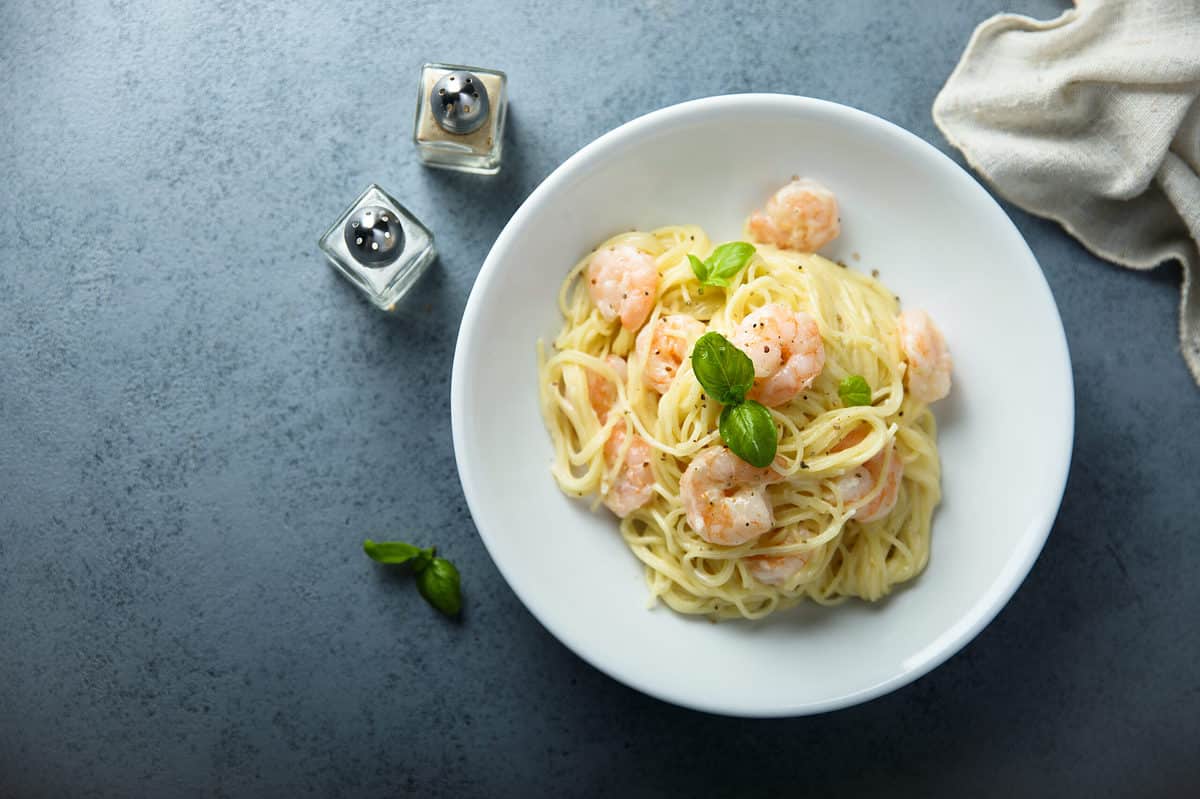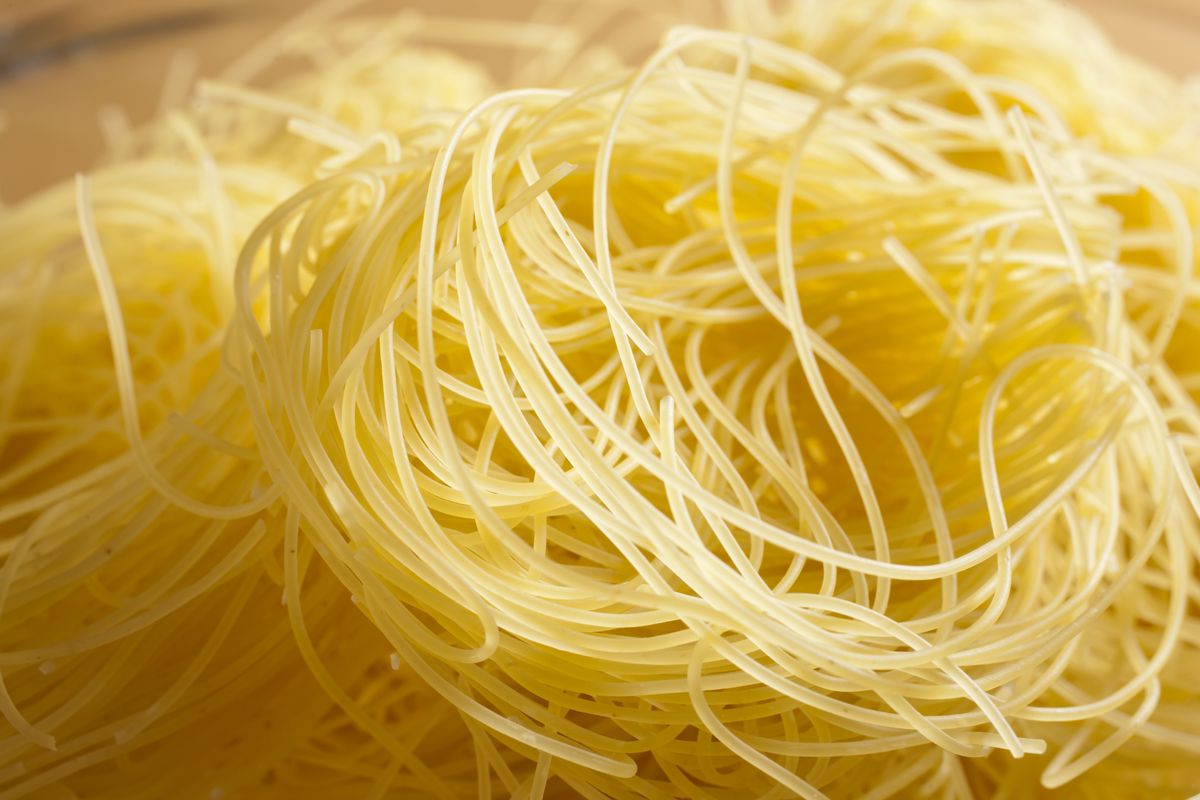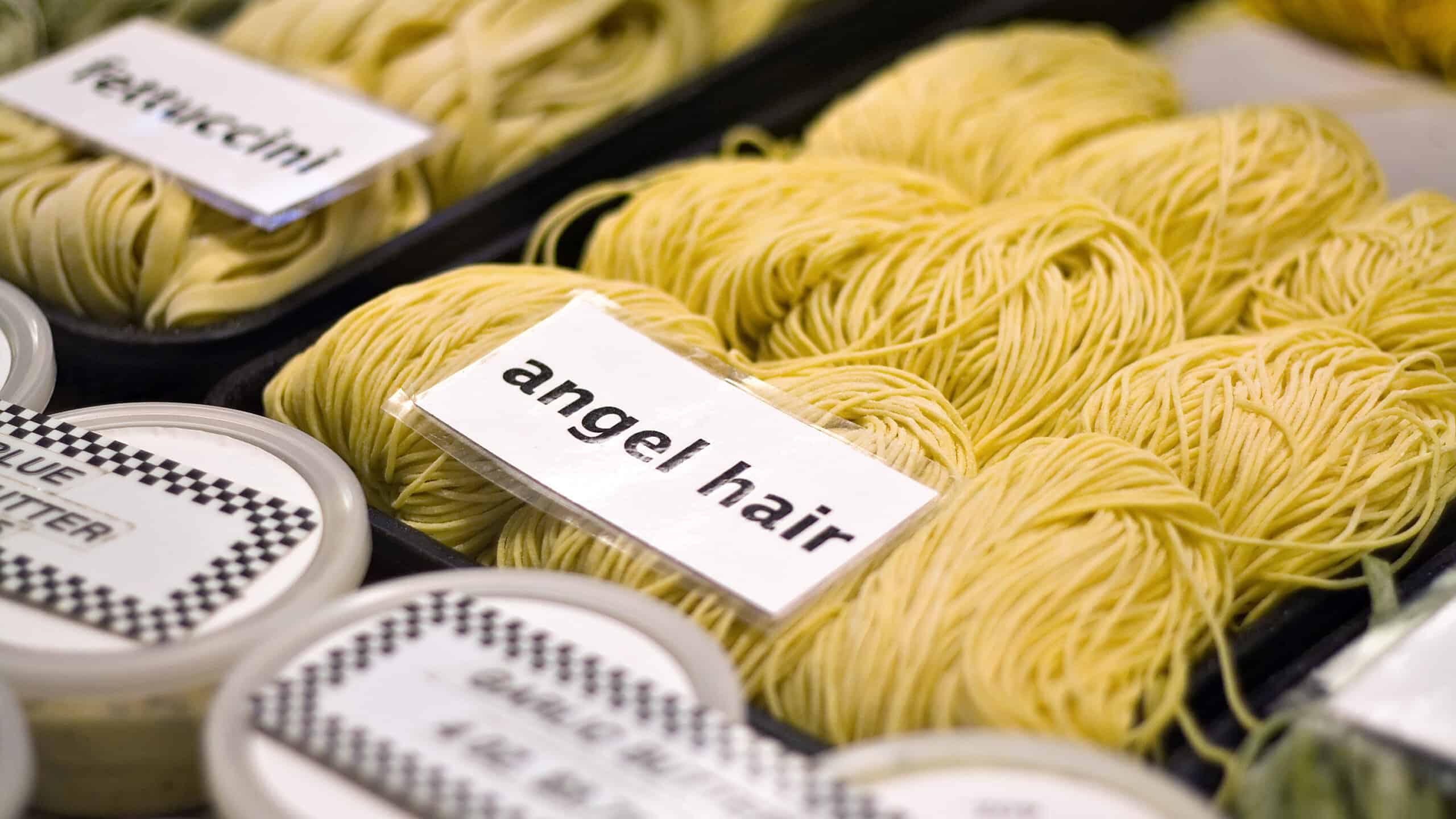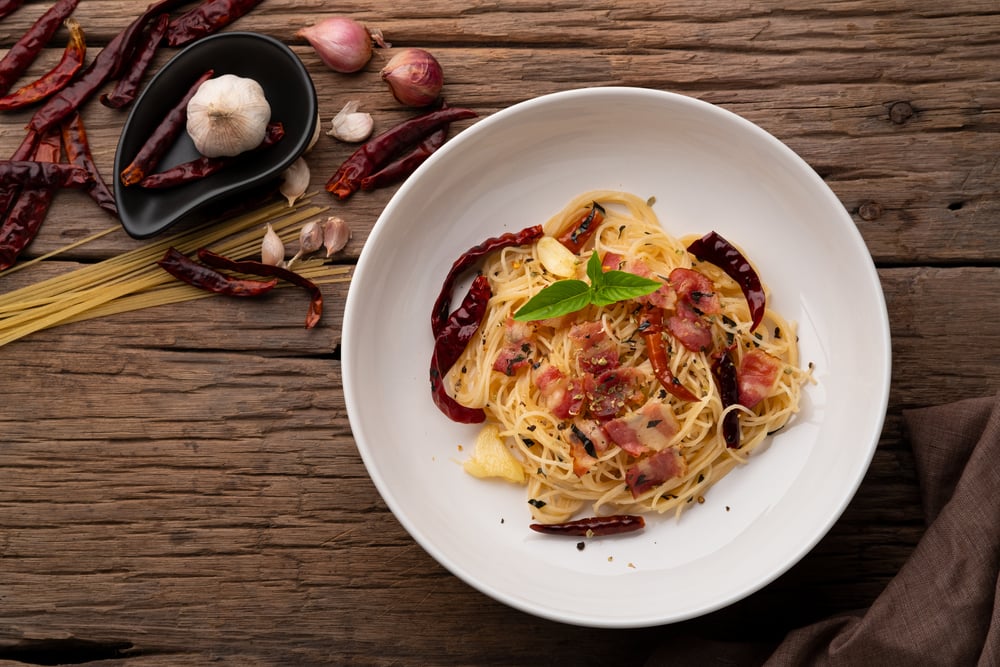Introduction

Capellini and Angel Hair pasta are both popular Italian pasta variations that are often used interchangeably. However, they have distinct characteristics and are favored in different culinary contexts. It is important for pasta enthusiasts and cooks to understand the differences between these two types of pasta in order to make informed choices when preparing and serving meals. This article aims to decode Capellini and Angel Hair pasta by delving into their origins, cooking times, textures, and preferred sauces. By understanding these differences, individuals can enhance their overall pasta experience and create delicious dishes that suit their preferences and culinary needs.
A Brief Overview Of The Topic And The Importance Of Knowing The Differences Between Capellini And Angel Hair Pasta.
Capellini and Angel Hair pasta may seem similar at first glance, but understanding their subtle differences is crucial for pasta enthusiasts and cooks. Knowing the distinctions between these two varieties allows individuals to make informed choices when deciding which pasta to use in their recipes. Capellini is thin and delicate, while Angel Hair pasta is slightly thicker. These variations in thickness result in differences in cooking times and texture. Additionally, each pasta has traditional sauces and dishes that pair best with them. By understanding these differences, individuals can enhance their pasta experience and create dishes that truly showcase the unique characteristics of each variety.
Capellini Pasta
Capellini pasta, derived from the Italian word for “little hairs,” is a thin and delicate variety of pasta. It originated in Southern Italy and has been a staple in Italian cuisine for centuries. Capellini is known for its fine and delicate strands, measuring between .85 to .92 millimeters in diameter. When cooked, it has a light and airy texture, making it perfect for dishes that require a delicate touch. Capellini pasta cooks quickly, usually in just a few minutes, making it a convenient choice for quick and easy meals. Its thinness allows it to absorb flavors well and pairs beautifully with light sauces and simple toppings.
Description And Origin Of Capellini Pasta

Capellini pasta, also known as “angel hair,” is a thin and delicate variety that originated in Southern Italy. With its fine and delicate strands, measuring between .85 to .92 millimeters in diameter, capellini pasta resembles “little hairs,” as its name suggests. It has a light and airy texture when cooked, making it a popular choice for dishes that require a delicate touch. Capellini pasta cooks quickly, typically in just a few minutes, which adds to its convenience. Due to its thinness, it absorbs flavors exceptionally well and pairs beautifully with light sauces and simple toppings.
Cooking Time And Texture Of Capellini Pasta
Capellini pasta is known for its quick cooking time, typically taking only a few minutes to reach al dente perfection. Its thin and delicate strands cook rapidly, making it a convenient option for those craving a speedy meal.
In terms of texture, capellini pasta has a light and airy consistency when cooked. Its thinness allows it to absorb flavors exceptionally well, creating a harmonious blend of taste in every bite. The delicate nature of capellini lends itself well to dishes that require a delicate touch. Pair it with light sauces, such as simple olive oil and garlic, or light tomato-based sauces to enhance its delicate flavor and texture.
Angel Hair Pasta
Angel Hair Pasta, also known as “Capelli d’Angelo” in Italian, is a thin and delicate pasta that originated in Southern Italy. It is made from durum wheat semolina and water, giving it a smooth texture. Angel Hair Pasta has a cooking time similar to Capellini, typically taking around 3-4 minutes to reach al dente. When cooked, Angel Hair Pasta has a fine and delicate texture, making it perfect for light and delicate sauces. It pairs well with sauces such as olive oil and garlic, light tomato-based sauces, or seafood-based sauces. Its delicate nature allows the flavors to shine through, creating a delightful culinary experience.
Description And Origin Of Angel Hair Pasta

Angel Hair Pasta, also known as “Capelli d’Angelo” in Italian, is a thin and delicate pasta that originated in Southern Italy. Made from durum wheat semolina and water, Angel Hair Pasta has a smooth texture and a fine and delicate appearance. This pasta variety is thinner than Capellini and has a delicate mouthfeel when cooked. Its name “Angel Hair” reflects its thin and delicate nature. Traditionally, Angel Hair Pasta is used in dishes that require a light and delicate sauce, allowing the flavors to shine through. It is often paired with sauces such as olive oil and garlic or seafood-based sauces.
Cooking Time And Texture Of Angel Hair Pasta
Angel Hair Pasta, also known as “Capelli d’Angelo” in Italian, is known for its delicate and fine texture. Due to its thinness, Angel Hair Pasta cooks very quickly. It usually takes around 4-5 minutes to reach al dente perfection. However, it is important to monitor the cooking process closely, as overcooking can result in a mushy texture. The delicate nature of Angel Hair Pasta allows it to absorb flavors easily, making it perfect for lighter sauces and delicate ingredients such as seafood or vegetables. Its fine texture creates a light and delicate mouthfeel, adding an elegant touch to any dish.
Capellini Vs Angel Hair Pasta: Similarities
When it comes to similarities, Capellini and Angel Hair pasta share a few key characteristics. Firstly, both types of pasta are thin and delicate, making them perfect for light and delicate dishes. Their fine texture allows them to absorb flavors easily, enhancing the overall taste of the dish. Additionally, Capellini and Angel Hair pasta are commonly used in similar recipes, such as seafood or vegetable dishes, where the delicate noodles complement the ingredients. So, whether you choose Capellini or Angel Hair pasta, you can expect a light and refined pasta experience that adds elegance to your meal.
Appearance And Thickness Of The Noodles

Capellini and angel hair pasta have a similar appearance with long and thin strands. However, when it comes to thickness, there is a slight difference between the two. Capellini, also known as “thin hair,” is marginally thicker than angel hair pasta. It has a diameter of approximately 0.85mm, while angel hair pasta is even thinner with a diameter of around 0.78mm. Despite the minimal variation in thickness, it can still affect the texture and cooking time of the noodles. Both types of pasta offer a delicate and refined look, adding elegance to any dish they are used in.
Common Dishes And Recipes That Use Both Capellini And Angel Hair Pasta
Capellini and angel hair pasta are versatile options that can be used interchangeably in various dishes. Both types of pasta work well in light and delicate recipes, allowing the flavors of the other ingredients to shine. Some common dishes and recipes that use both capellini and angel hair pasta include:
- Aglio e Olio: A classic Italian dish that features garlic, olive oil, and chili flakes tossed with the pasta.
- Pasta Primavera: A light and colorful pasta dish that combines seasonal vegetables with a simple sauce or dressing.
- Pasta with seafood: Capellini and angel hair pasta are often paired with shrimp, scallops, or clams in dishes like pasta ai frutti di mare.
- Pasta with pesto sauce: The thin strands of both types of pasta are perfect for trapping and coating in a creamy pesto sauce.
- Pasta salads: Capellini and angel hair pasta can be used in cold pasta salads with fresh veggies, herbs, and a tangy dressing.
Remember to adjust the cooking time according to the specific recipe and personal preference for al dente or softer pasta.
Capellini Vs Angel Hair Pasta: Differences
Capellini and angel hair pasta may seem similar, but there are a few key differences that set them apart. Firstly, capellini, also known as “thin hair,” is slightly thicker than angel hair pasta. This difference in thickness affects the cooking time and texture of the pasta. Capellini tends to be a bit firmer and holds up well in dishes with heavier sauces. On the other hand, angel hair pasta is extremely thin and delicate, cooking much faster and resulting in a softer, more delicate texture. It is often best paired with lighter sauces or used in salads. So, when choosing between capellini and angel hair pasta, consider the desired texture and sauce pairing for your dish.
Texture And Mouthfeel When Cooked

When cooked, the texture and mouthfeel of capellini and angel hair pasta differ significantly. Capellini, being slightly thicker, maintains a firmer texture even after being cooked. It holds up well in dishes with heavier sauces, providing a satisfying bite. On the other hand, angel hair pasta, due to its delicate nature, cooks much faster and results in a softer, more delicate texture. It tends to be more tender and can easily be overcooked, leading to a mushy consistency. Angel hair pasta pairs best with lighter, more delicate sauces to complement its delicate texture.
Traditional Usage And Preferred Sauces For Each Type Of Pasta
Capellini pasta is traditionally used in Italian cuisine with lighter, delicate sauces. Its thinness allows it to soak up flavors more easily. Common sauces include:
- Aglio e Olio: A simple sauce made with olive oil, garlic, and chili flakes.
- Pesto: A traditional sauce made with fresh basil, garlic, pine nuts, Parmesan cheese, and olive oil.
- Light Tomato Sauce: A basic tomato sauce with minimal ingredients, allowing the pasta to shine.
- Seafood Sauce: Capellini pairs well with light seafood sauces featuring shrimp, clams, or mussels.
On the other hand, angel hair pasta is often used with more delicate broths or light sauces to avoid overpowering the pasta’s delicate texture. Some preferred sauces include:
- Primavera Sauce: A fresh, vegetable-based sauce with light cream or olive oil.
- Lemon Butter Sauce: A simple sauce made with butter, lemon juice, and zest.
- Cacio e Pepe: A classic Roman sauce made with pecorino cheese and black pepper.
- White Wine Sauce: A light sauce made with white wine, garlic, and butter.
These traditional pairings enhance the unique qualities of each pasta variety, providing a harmonious balance of flavors.
Conclusion
In conclusion, knowing the differences between capellini and angel hair pasta can greatly enhance your culinary skills and allow you to choose the right pasta for your recipes. While both varieties are thin and delicate, capellini is slightly thicker and has a softer texture, while angel hair pasta is ultra-thin with a more delicate mouthfeel. Additionally, traditional usage and preferred sauces differ for each type, with capellini pairing well with lighter sauces and angel hair pasta complementing delicate broths and light sauces. By understanding these distinctions, you can create harmonious and flavorful pasta dishes that perfectly suit your taste preferences.
A Summary Of The Key Differences Between Capellini And Angel Hair Pasta, And Personal Preferences In Choosing The Right Pasta For Different Recipes.

When comparing capellini and angel hair pasta, it is important to note their key differences. Capellini is slightly thicker and has a softer texture compared to the ultra-thin and delicate angel hair pasta. Their traditional usage also differs, with capellini pairing well with lighter sauces, while angel hair pasta complements delicate broths and light sauces. In terms of personal preferences, it ultimately depends on the desired mouthfeel and sauce consistency for a particular recipe. It is recommended to consider the flavors and textures of the ingredients used and choose the pasta variety that best enhances the overall dish.
FAQ: Capellini vs Angel Hair Pasta
Q: What is the difference between capellini and angel hair pasta?
A: Capellini and angel hair pasta are often used interchangeably as they both fall under the category of long, thin pasta. However, there are certain subtle differences between them.
Q: Is the thickness of capellini and angel hair pasta the same?
A: No, capellini is slightly thicker than angel hair pasta. Capellini has a diameter of about 1.0-1.1 millimeters, while angel hair pasta is even finer, with a diameter of about 0.85-0.92 millimeters.
Q: How do capellini and angel hair pasta differ in cooking time?
A: Due to its thinner nature, angel hair pasta cooks much faster than capellini. Angel hair pasta typically takes around 3-4 minutes to cook, while capellini may take 4-6 minutes.
Q: Can capellini and angel hair pasta be used interchangeably in recipes?
A: Yes, capellini and angel hair pasta can be used interchangeably in most recipes that call for thin pasta. However, be mindful of the cooking time and adjust it accordingly, as angel hair pasta cooks faster than capellini.
Q: What are the ideal sauces to pair with capellini and angel hair pasta?
A: Capellini and angel hair pasta pair well with light, delicate sauces that cling to the thin strands. Both work beautifully with olive oil, garlic, and tomato-based sauces. They also go well with seafood, such as shrimp or scallops.
Q: Are there any significant taste differences between capellini and angel hair pasta?
A: Capellini and angel hair pasta have a similar taste as they are both made from durum wheat semolina. The primary difference lies in their texture and how they hold the sauce.
Q: Are capellini and angel hair pasta suitable for cold pasta dishes?
A: Yes, both capellini and angel hair pasta work well in cold pasta dishes like salads. Due to their fine strands, they can easily incorporate flavors and dressings, offering a light and refreshing texture.
Q: Are there any regional preferences for capellini and angel hair pasta?
A: Capellini is commonly known as “angel hair” in the United States and other English-speaking countries. However, in Italy, capellini is usually called “capelli d’angelo” or “angel hair.” The preference for one over the other is often based on personal choice and recipe requirements.
Q: Can capellini and angel hair pasta be used in soups?
A: While both capellini and angel hair pasta can technically be added to soups, their delicate nature makes them cook quickly and become softer. Therefore, if planning to use them in soups, it’s recommended to add them towards the end of the cooking process to prevent them from becoming overly mushy.
Q: Are there any other pasta varieties similar to capellini and angel hair pasta?
A: Yes, there are a few other pasta varieties that are similar in thickness to capellini and angel hair pasta. These include spaghettini, vermicelli, and thin spaghetti. However, each of these has its own unique characteristics and cooking times.
Overall, whether you choose capellini or angel hair pasta, both offer a delightful dining experience. Enjoy experimenting with different sauces and recipes to determine your personal preference!

We are a small takeaway restaurant offering a great selection of food cooked by our Thai chef. Table spaces are limited, so please book in advance.